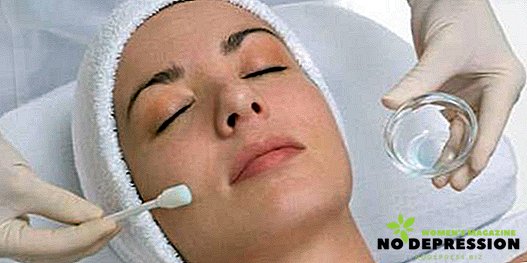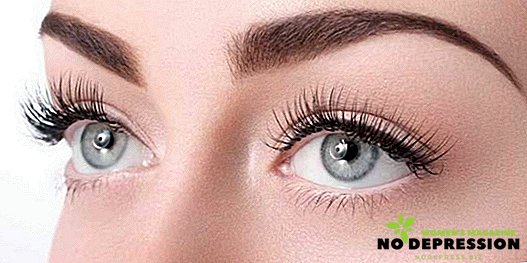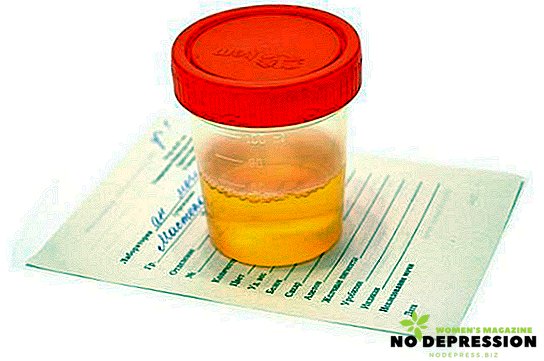Chemical peeling is the exfoliation of keratinized facial skin with various acids. Due to peeling, the natural exfoliation of the skin occurs faster, which has a beneficial effect on the overall condition of the skin.

For the procedure using several types of acids:
- glycolic;
- trichloroacetic;
- retinoic;
- pyruvic;
- salicylic;
- combined, the composition of which includes several different acids.
How does chemical peeling work
Chemical peeling, as a rule, is used to renew the cells of the skin of the face, but it can also be used for the skin of the neck, décolleté, hands.
In essence, all the acids cause burns on the skin, however, peeling burn to the skin "for good".
Thanks to him, the upper dead skin layer is removed, allowing for the growth of new cells. The acid applied stimulates the metabolism and, as a result, the renewal of the skin. The final result depends on how deeply the acid has penetrated, which, in turn, depends on the choice of substance for the procedure.
Types, advantages and disadvantages of chemical peeling
Depending on the depth of exposure, chemical peels are divided into three types:
- surface;
- median;
- deep.
Superficial peeling of the face is the most gentle type of skin renewal. During this procedure, the depth of exposure to drugs is minimal - only the upper, dead layers of the skin are affected, and, when using a different type of acid, a number of living cells may be affected. However, the effect of substances on living cells in any case is minimal — hundredths of millimeters.
Superficial cleansing of the face is carried out in order to affect the thick surface layer of dead skin cells of the face. During the procedure, the top layer of the skin becomes thinner, so that the skin of the face looks lighter, the tone is smoother.
Indications for the surface procedure are:
- lightening of the skin;
- alignment of the skin structure;
- prevention of acne;
- narrowing of enlarged pores;
- further middle peeling.
The procedure is carried out only with the use of non-toxic acids - malic, tartaric, glyclic, almond or citric. At the same time, the most popular acid in use is glycolic acid. It helps to increase the process of exfoliation of cells, so that people who are prone to acne, black spots stop to appear.

Among the positive aspects in the use of surface peeling are the following:
- this type of procedure can be performed at any time of the year;
- at the end of the procedure, no temporary deterioration of the skin occurs;
- the procedure does not bring any pain;
- This is the safest procedure, as the action of acids occurs only on the upper layers of the skin.
Despite this, there are disadvantages:
- frequent treatment is necessary;
- even repeated surface peeling does not bring such a result as the middle one.
In the middle peeling, the epidermis is almost completely removed. This procedure is aimed at eliminating wrinkles and giving the skin a younger appearance. In addition, with this type of peeling, various pigment spots are removed. But deeper damage, in the form of acne scars, this method is not removed.

Trichloroacetic acid, salicylic acid and glycolic acid are most commonly used for the procedure. Median peeling allows you to make the upper layer more uniform, the epidermis - denser, and deep living cells - more elastic.
Indications for its use are:
- skin rejuvenation;
- smoothing fine wrinkles;
- destruction of small surface scars;
- elimination of pigmentation, freckles.
This type of peeling is used not only to clean the skin of the face, but also to remove stretch marks on other parts of the body.
The disadvantage of the procedure is its short duration. To increase the exposure time, you can use skin care programs. In addition, this method of cleansing the skin can not be called absolutely painless, because living skin cells are affected.
And from the positive aspects of the procedure, you can highlight its quick effect - the first results become noticeable after a week.
 The effect of acids on the skin leads to the elimination of the upper cells of the face, contributing to the formation of a new epidermis, in the deep layers, the growth of new capillaries is stimulated, and in the skin layers hyaluronic acid is produced, which affects the skin's elasticity.
The effect of acids on the skin leads to the elimination of the upper cells of the face, contributing to the formation of a new epidermis, in the deep layers, the growth of new capillaries is stimulated, and in the skin layers hyaluronic acid is produced, which affects the skin's elasticity.
Before the procedure, you must prepare the skin. 4 weeks before it is necessary to treat the skin with glycolic acid or bleaching agents daily. For those whose skin has a chocolate shade, the use of bleaching preparations is recommended both before and after the procedure, as the acids used can lead to the formation of pigment spots.
Deep peeling is a type of procedure that completely removes the epidermis, the nipple layer of the dermis and affects the reticular layer. This is one of the most radical ways to rejuvenate the skin.
Skin cells live for 28 days. After dying, they are not able to completely retire on their own, clogging up their pores and visually giving the skin an older look. Thanks to the peeling procedures, these dead cells are peeled off, allowing for the growth of new ones.
It is imperative to consult a specialist for carrying out such a procedure, since due to the use of strong acids chemical burns of the skin can be obtained. The cleaning itself is usually not prescribed for persons under 55 years of age. For younger people, more benign methods are used.
Indications for deep cleansing are:
- bright age-related skin changes;
- skin sagging;
- age spots;
- reduced eyelid elasticity;
- scars of the skin.
Deep cleaning is performed using phenolic acid with impurities of oils, glycerin, propylene glycol and purified water. This solution is able to completely remove the epidermis and stimulate the growth of new cells.

Positive aspects in the use of face cleansing:
- the face takes on a young appearance;
- smoothing the upper layer and strengthening the elasticity make the appearance of the face visually younger by 10-15 years;
- the sebaceous glands are improving.
The disadvantages of using this procedure are:
- high pain syndrome;
- after deep cleansing, the skin becomes very sensitive to ultraviolet radiation, as well as to various bacteria;
- rehabilitation takes a long time.
Indications and contraindications
Do not abuse the procedures if there are no direct indications for their conduct. In some cases, it is enough to apply cleansing masks for the skin at home, which will not harm the face. However, cleaning the face should be carried out with the following indications:
- age-related skin changes in the form of possible sagging, pigment spots, wrinkles;
- skin defects (acne scars);
- acne, black spots;
- narrowing of pores;
- giving skin tone, leveling tone.
 Depending on the neglect of the above symptoms, the type of dry cleaning is chosen - superficial, medium or deep.
Depending on the neglect of the above symptoms, the type of dry cleaning is chosen - superficial, medium or deep.
But, as for all other procedures, in this case, besides the evidence, there are also contraindications. Among them:
- skin hypersensitivity;
- allergy to used drugs;
- fresh tan;
- the use of substances that increase sensitivity to sunlight;
- pregnancy and lactation;
- the presence of an infectious or viral disease, diabetes mellitus, hypertension or oncology.
In the presence of at least one of the symptoms, it is required to refuse to clean the skin completely or until the symptom is eliminated.
Procedure Procedure
How are chemical peels performed? Before carrying out a cosmetic procedure is required to clean the skin. It should be noted that cleaning should be carried out with special gels - soap and other cleaning products disrupt the natural balance, making further dry cleaning useless.
After the face is cleared, the beautician applies an acid composition for ten minutes. Over time, this composition turns white, forming a film, which is removed by a beautician using a sponge and a special substance. Depending on the depth of penetration, the patient may feel a slight burning sensation or may not experience any pain at all.
Upon completion of the removal of the formed film, the beautician applies a cream for the skin to the face - a cream, a balm.
The effect of the procedure occurs about a week after it. All this time, the person requires careful care.
Feelings after cleansing, possible complications and side effects
After cleaning, the skin has a red tinge for several days due to the use of chemicals. After a couple of days the skin becomes smooth, supple. Immediately after this comes the stage of peeling - the skin is updated. The results of the procedure will be immediately noticeable.
The complications and side effects of the procedure include:
- scar formation;
- manifestation of allergies;
- the formation of age spots;
- persistent redness;
- burns.
To avoid complications, it is required to apply only to professional cosmetologists and not to neglect contraindications to carrying out cleaning.
Facial care during the rehabilitation period
Upon completion, the cosmetologist will prescribe treatments for home care. Be sure to use the cream with a sunscreen effect. In addition, trips to the solarium, baths, saunas are prohibited.
You can go out only after applying sunscreen preparations. But even after their application it is recommended to avoid direct sunlight.
In the peeling stage, in no case should you peel off the exfoliating areas yourself. To establish the normal course of rehabilitation, it is necessary to visit a cosmetologist two days after the procedure.
Service prices
How much does chemical peeling face? In different cities and centers of cosmetology prices for services may vary. However, average prices are set at:
- surface cleaning - at the level of 4000 rubles;
- middle cleaning - at the level of 8,000 rubles;
- deep cleaning - at the level of 15,000 rubles.
To determine the exact cost, it is best to contact directly the centers providing such services.
Patient Reviews
On the Internet you can find many reviews about the procedure. Some of them:
In the next video - additional information about the chemical peeling of the face.












